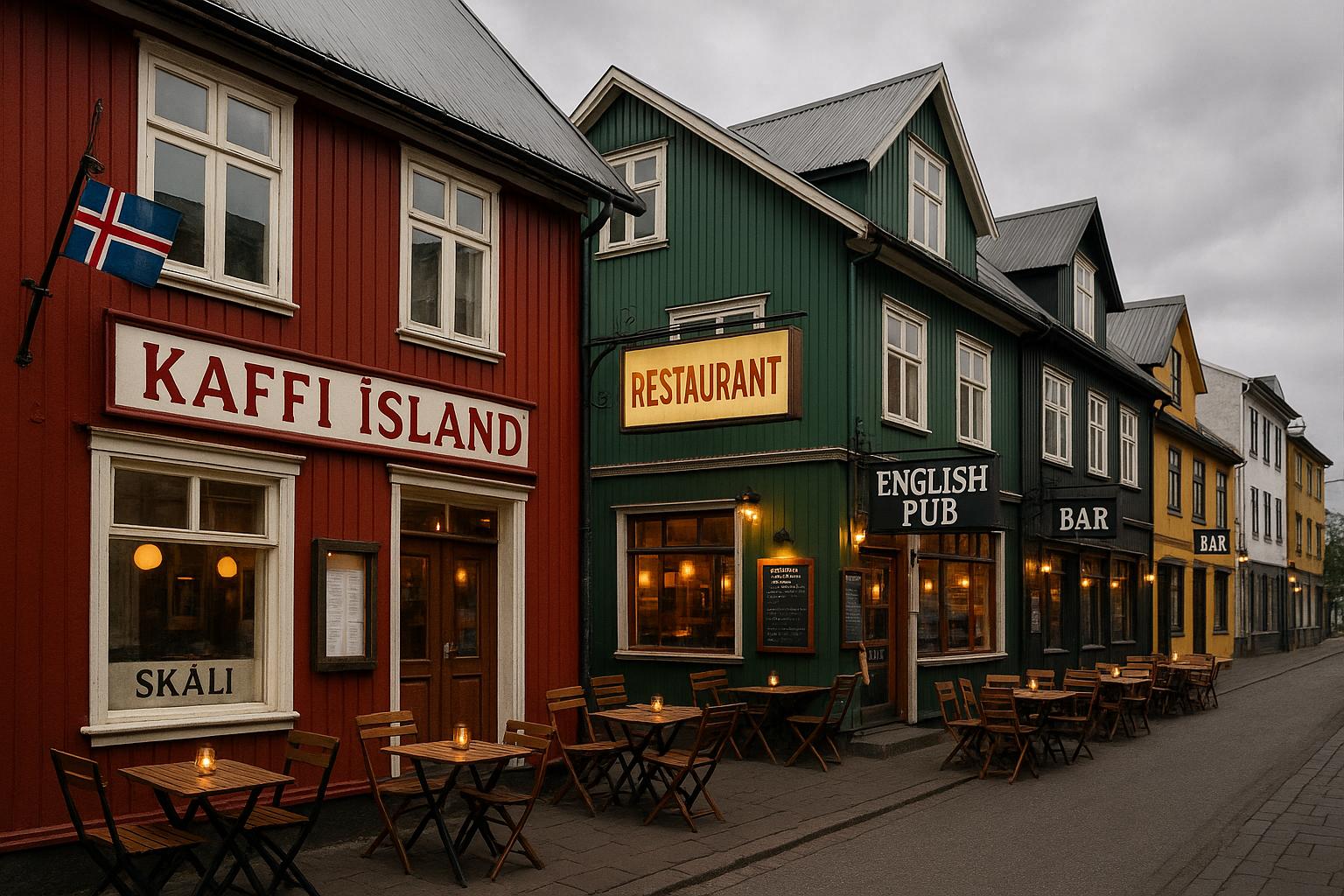Wander through the bustling heart of Reykjavík, and you’ll notice something curious. Step into a café, scan a chalkboard menu outside a pub, or flip through a sushi bar’s offerings—and more often than not, what you’ll find is English. Not Icelandic.
That’s a problem, at least according to Iceland’s consumer watchdog, Neytendastofa. In a recent sweep of restaurants in downtown Reykjavík, inspectors discovered that nearly half weren’t following the country’s language rules. It’s a small story with surprisingly big stakes: a clash between tourism, business realities, and the survival of a thousand–year–old mother tongue.
What the Inspectors Found
Of 83 restaurants checked in the city center, 34 only offered menus in English. A couple didn’t even have menus at their entrances at all—a clear violation. Six others did include Icelandic menus, but all the extra information—think drink lists and specials—was written only in English.
Since then, 18 restaurants have corrected course, adding Icelandic versions. But just as many haven’t. For them, legal action may be looming.
Why Iceland Cares
Iceland’s language laws are straightforward: if you’re marketing to locals—whether through ads, signs, or menus—it needs to be available in Icelandic. The idea isn’t just bureaucratic red tape. It’s about protecting linguistic equality and making sure Icelanders don’t have to switch to English in their own country just to order dinner.
So when a restaurant ignores the rule, it’s more than a technical violation. For many, it feels like a cultural slight.
The Pull of Tourism
Of course, there’s another side to all this. Reykjavík has been booming as a tourist hotspot for years, enticing visitors from all corners of the globe. For businesses, speaking English is simply the fastest way to reach the largest number of customers.
But it also creates an uneasy tension: should Icelanders, in their own capital, have to navigate restaurants where their language isn’t even available? Or is it fair for restaurants to lean on the global “lingua franca,” especially when most of their income comes from travelers?
Not Just Iceland’s Story
If this sounds familiar, it’s because Iceland isn’t the only place grappling with the English question. In Sweden, Denmark, and Finland, there have been similar debates, especially in tourist-heavy areas or hip city districts where English dominates storefronts and ads.
Unlike Iceland, Sweden doesn’t legally require menus to be in Swedish. Still, its language law says Swedish is society’s “main language.” In that sense, Reykjavík’s small skirmish feels like a preview for larger conversations playing out across the Nordic region: how do smaller national languages hold their ground in a global economy tilted toward English?
Why It Matters
For Iceland, this fight is about more than customer convenience. It’s about identity. Icelandic has survived remarkably intact for over a thousand years, still close to the Old Norse spoken by the Vikings. That’s no small feat in a world where many small languages fade quickly under the shadow of global trade and tourism.
But languages don’t erode all at once—they slip away bit by bit, sometimes starting with something as ordinary as a restaurant menu.
For many, the solution isn’t about shutting out English but about balance. A bilingual menu, where Icelandic stands alongside English, gives tourists what they need while keeping Icelanders anchored in their own language.
The Bigger Question
Nearly half of Reykjavík’s restaurants have been breaking Iceland’s language rules. But the stakes are about more than fines or legal action. They touch on questions that resonate far beyond Iceland:
- How do we protect smaller languages in a world where English feels unavoidable?
- When does practicality—talking to tourists in a shared tongue—become a cultural loss?
- And, in the end, should ordering a glass of wine in Reykjavík require English at all?
👉 What do you think—should Nordic restaurants always offer their menus in the national language first, or has English become “enough” in international cities?

